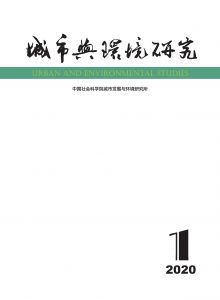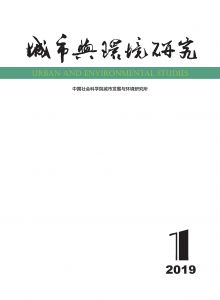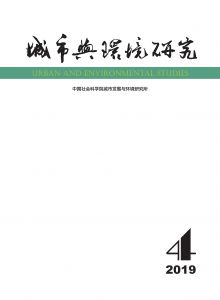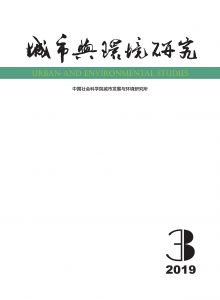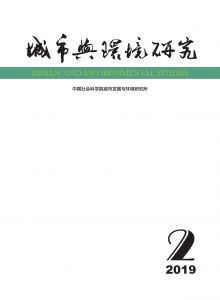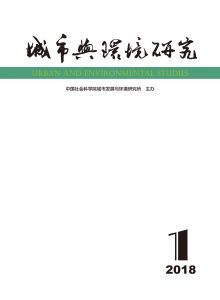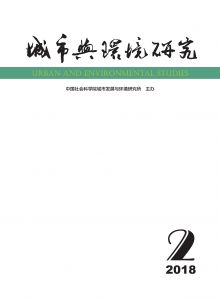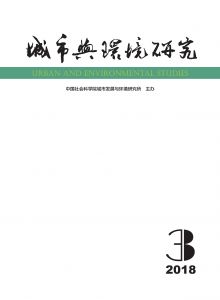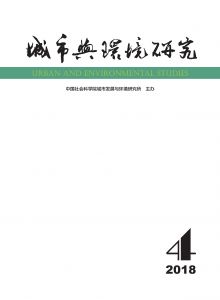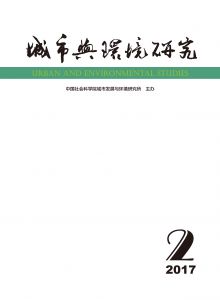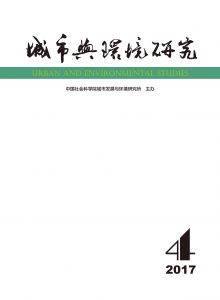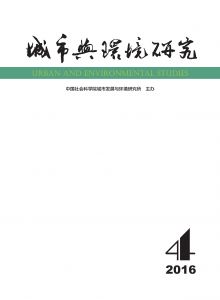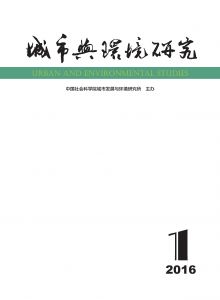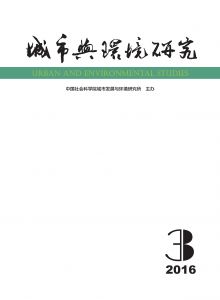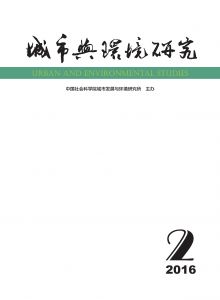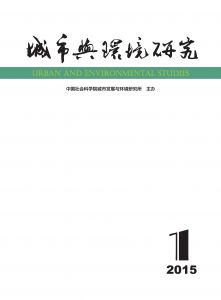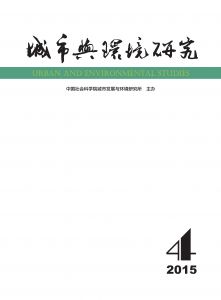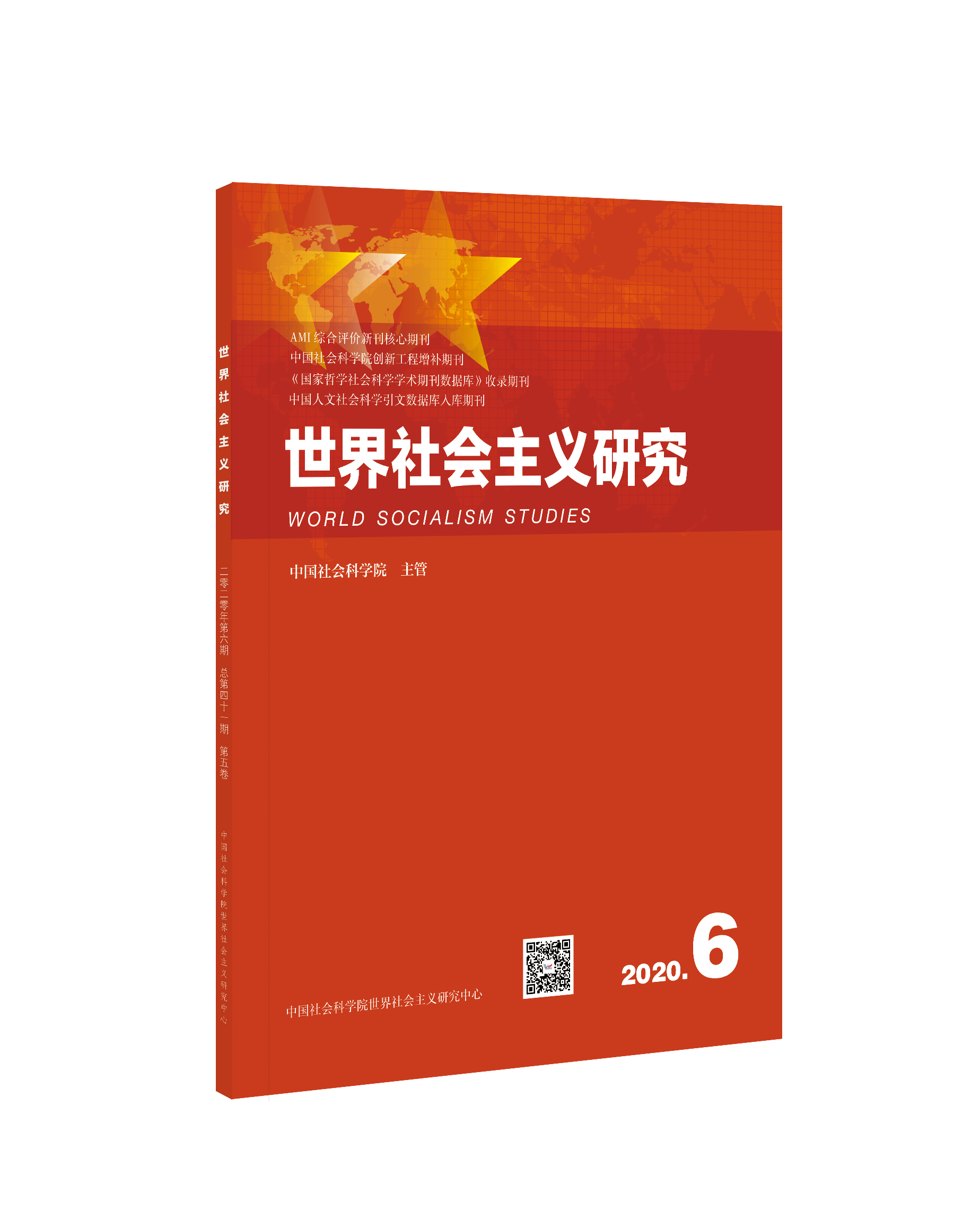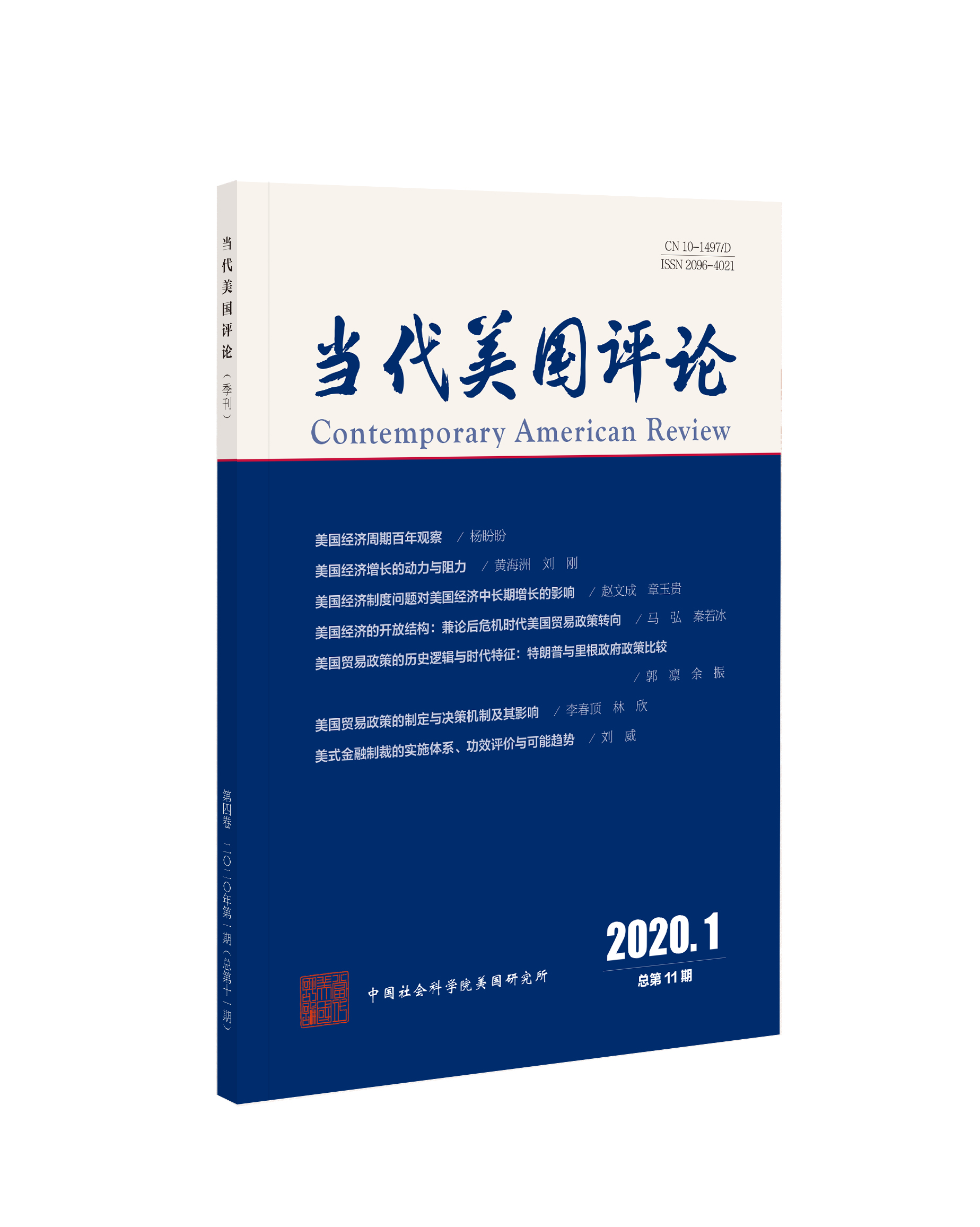最新期刊
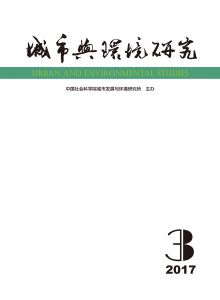
目录
过往期刊
参考文献
-
编委会
-
·名家论坛·
-
论经济发展的本真复兴
-
-
·学术论文·
-
中国城市生产率变化和经济增长源泉:2001~2014年
-
供给侧视角下的城镇化、创新与经济增长:理论述评
-
加强中印应对气候变化合作:意义与合作领域
-
保障性住房对房地产市场的影响研究
-
工业园区碳排放的影响因素
-
-
·学术综述·
-
能源消费研究进展评述与展望
-
-
·学术访谈·
-
低碳发展背景下康养与旅游的关系及生态康养旅游名市建设实践
-
-
投稿须知
-
首届环境技术经济前沿研讨会在沈召开
-
首届气候变化经济学学术研讨会在京召开
-
版权页
按年份浏览:
- 全部
- 2020
- 2019
- 2018
- 2017
- 2016
- 2015
- 2014
[1][1]〔美〕大卫·哈维(2016):《资本社会的17个矛盾》,许瑞宋译,北京:中信出版社,第58页。
[2][2]金碚(2016):《马克思劳动价值论的现实意义及理论启示》,《中国工业经济》第6期,第5~13页。
[3][3]金碚(2017):《基于价值论与供求论范式的供给侧结构性改革研析》,《中国工业经济》第4期,第5~16页。
[4][4]〔奥〕路德维希·米塞斯(2015):《经济科学的最终基础》,朱泱译,北京:商务印书馆。
[5][5]〔德〕马克斯·韦伯(1987):《新教伦理与资本主义精神》,于晓、陈维纲等译,北京:生活·读书·新知三联书店。
[6][6]〔法〕托马斯·皮凯蒂(2014):《21世纪资本论》,巴曙松等译,北京:中信出版社,第75页。
[7][7]白重恩、张琼(2015):《中国生产率估计及其波动分解》,《世界经济》第12期,第3~28页。
[8][8]蔡昉(2007):《中国经济面临的转折及其对发展和改革的挑战》,《中国社会科学》第3期,第4~13、203页。
[9][9]谌莹、张捷(2016):《碳排放、绿色全要素生产率和经济增长》,《数量经济技术经济研究》第8期,第47~63页。
[10][10]成邦文、刘树梅、吴晓梅(2001):《C-D生产函数的一个重要性质》,《数量经济技术经济研究》第7期,第78~80页。
[11][11]单豪杰(2008):《中国资本存量K的再估算:1952~2006年》,《数量经济技术经济研究》第10期,第17~31页。
[12][12]董旭、吴传清(2017):《中国城市全要素生产率的时空演变与影响因素研究——来自35个主要城市2000~2014年的经验证据》,《学习与实践》第5期,第5~16页。
[13][13]范丹(2015):《经济转型视角下中国工业行业环境全要素生产率及增长动力分析》,《中国环境科学》第10期,第3177~3186页。
[14][14]冯猛、王琦晖(2013):《什么影响了制造业行业内生产率结构变化?——基于1998~2007年中国工业企业数据的实证研究》,《产业经济研究》第3期,第35~44页。
[15][15]高春亮(2007):《1998~2003城市生产效率——基于包络技术的实证研究》,《当代经济科学》第1期,第83~88、127页。
[16][16]何枫、陈荣、何林(2003):《我国资本存量的估算及其相关分析》,《经济学家》第5期,第29~35页。
[17][17]贺菊煌(1992):《我国资产的估算》,《数量经济技术经济研究》第8期,第24~27页。
[18][18]胡鞍钢、郑云峰、高宇宁(2015):《中国高耗能行业真实全要素生产率研究(1995~2010)——基于投入产出的视角》,《中国工业经济》第5期,第44~56页。
[19][19]揭懋汕、郭洁、陈罗烨等(2016):《碳约束下中国县域尺度农业全要素生产率比较研究》,《地理研究》第5期,第898~908页。
[20][20]金剑、蒋萍(2006):《生产率增长测算的半参数估计方法:理论综述和相关探讨》,《数量经济技术经济研究》第9期,第22~28页。
[21][21]李静、李逸飞、马永军(2016):《中国城市全要素生产率增长率的动态实证分析及收敛性研究》,《江淮论坛》第3期,第54~63页。
[22][22]李静、孟令杰(2006):《中国农业生产率的变动与分解分析:1978~2004年》,《数量经济技术经济研究》第5期,第11~19页。
[23][23]李培(2007):《中国城市经济增长的效率与差异》,《数量经济技术经济研究》第7期,第97~106页。
[24][24]李平、钟学义、王宏伟等(2013):《中国生产率变化与经济增长源泉:1978~2010年》,《数量经济技术经济研究》第1期,第3~21页。
[25][25]李郇、徐现祥、陈浩辉(2005):《20世纪90年代中国城市效率的时空变化》,《地理学报》第4期,第615~625页。
[26][26]刘秉镰、李清彬(2009):《中国城市全要素生产率的动态实证分析:1990~2006——基于DEA模型的Malmquist指数分析》,《南开经济研究》第3期,第139~152页。
[27][27]鲁晓东、连玉君(2012):《中国工业企业全要素生产率估计:1999~2007》,《经济学(季刊)》第2期,第541~558页。
[28][28]罗良文、潘雅茹、陈峥(2016):《基础设施投资与中国全要素生产率——基于自主研发和技术引进的视角》,《中南财经政法大学学报》第1期,第30~37、159页。
[29][29]齐峰(2015):《我国战略性新兴产业全要素生产率的实证测度——基于DEA的Malmquist指数法》,《科技管理研究》第14期,第121~125页。
[30][30]任若恩、孙琳琳(2009):《我国行业层次的TFP估计:1981~2000》,《经济学(季刊)》第4期,第925~950页。
[31][31]邵军、徐康宁(2010):《我国城市的生产率增长、效率改进与技术进步》,《数量经济技术经济研究》第1期,第58~106页。
[32][32]孙琳琳、任若恩(2005):《资本投入测量综述》,《经济学(季刊)》第4期,第823~842页。
[33][33]〔美〕特伦斯·斯图尔特、樊瑞(2016):《中国产能过剩的成因和影响》,《中国经济报告》第5期,第64~67页。
[34][34]田云、张俊飚、吴贤荣等(2015):《碳排放约束下的中国农业生产率增长与分解研究》,《干旱区资源与环境》第11期,第7~12页。
[35][35]王德祥、薛桂芝(2016):《中国城市全要素生产率的测算与分解(1998~2013)——基于参数型生产前沿法》,《财经科学》第9期,第42~52页。
[36][36]王俊(2016):《环境管制、R&D投资与生产率》,《浙江社会科学》第1期,第117~125、160页。
[37][37]王恕立、滕泽伟、刘军(2015):《中国服务业生产率变动的差异分析——基于区域及行业视角》,《经济研究》第8期,第73~84页。
[38][38]王艺明、陈晨、高思航(2016):《中国城市全要素生产率估算与分析:2000~2013》,《经济问题》第8期,第1~8、34页。
[39][39]王益煊、吴优(2003):《中国国有经济固定资本存量的初步测算》,《统计研究》第5期,第40~45页。
[40][40]谢千里、罗斯基、郑玉歆(1995):《改革以来中国工业生产率变动趋势估计及可靠性分析》,《经济研究》第12期,第10~22页。
[41][41]徐杰、段万春、杨建龙(2010):《中国资本存量的重估》,《统计研究》第12期,第73~78页。
[42][42]叶初升、惠利(2016):《农业生产污染对经济增长绩效的影响程度研究——基于环境全要素生产率的分析》,《中国人口·资源与环境》第4期,第116~125页。
[43][43]叶宗裕(2010):《中国省际资本存量估算》,《统计研究》第12期,第65~71页。
[44][44]叶宗裕(2014):《全国及区域全要素生产率变动分析——兼对C-D生产函数模型的探讨》,《经济经纬》第1期,第14~19页。
[45][45]殷宝庆(2012):《环境规制与我国制造业绿色全要素生产率——基于国际垂直专业化视角的实证》,《中国人口·资源与环境》第12期,第60~66页。
[46][46]余泳泽(2015):《改革开放以来中国经济增长动力转换的时空特征》,《数量经济技术经济研究》第2期,第19~34页。
[47][47]原毅军、谢荣辉(2016):《环境规制与工业绿色生产率增长——对强波特假说的再检验》,《中国软科学》第5期,第144~154页。
[48][48]张健华、王鹏(2012):《中国全要素生产率:基于分省份资本折旧率的再估计》,《管理世界》第10期,第18~30、187页。
[49][49]张军(2002):《资本形成、工业化与经济增长:中国的转轨特征》,《经济研究》第6期,第3~16、93页。
[50][50]张军、吴桂英、张吉鹏(2004):《中国省际物质资本存量估算:1952~2000》,《经济研究》第10期,第35~44页。
[51][51]张军、章元(2003):《对中国资本存量K的再估计》,《经济研究》第7期,第35~43、90页。
[52][52]张军扩(1991):《“七五”期间经济效益的综合分析——各要素对经济增长贡献率的测算》,《经济研究》第4期,第8~17页。
[53][53]张少华、蒋伟杰(2014):《中国全要素生产率的再测度与分解》,《统计研究》第3期,第54~60页。
[54][54]郑世林(2016):《中国政府经济治理的项目体制研究》,《中国软科学》第2期,第23~38页。
[55][55]郑世林、韩高峰、石光(2016):《房地产限购对公司违约风险的影响》,《世界经济》第10期,第150~173页。
[56][56]郑世林、张宇、曹晓(2015):《中国经济增长源泉再估计:1953~2013》,《人文杂志》第11期,第30~40页。
[57][57]郑玉歆(1999):《全要素生产率的测度及经济增长方式的“阶段性”规律——由东亚经济增长方式的争论谈起》,《经济研究》第5期,第55~60页。
[58][58]Ackerberg,D.,K. Caves and G. Frazer(2015),“Identification Properties of Recent Production Function Estimators.” Econometrica ,83(6),pp.2411-2451.
[59][59]Arayama,Y. and K.Miyoshi (2004),“Regional Diversity and Sources of Economic Growth in China”,World Economy ,27(10),pp.1583-1607.
[60][60]Chow,C. G. and K. W. Li (2002),“China’s Economic Growth:1952-2010”,Economic Development and Cultural Change ,51(1),pp. 247-256.
[61][61]Edquist,H. O. and M. Henrekson(2016),“Do R&D and ICT Affect Total Factor Productivity Growth Differently?”,IFN Working Paper ,No. 1108.
[62][62]Jorgenson,D. W.(2001),“Information Technology and the U.S. Economy”,The American Economic Review ,91(1),pp.1-32.
[63][63]Krugman,P.(1994),“The Myth of Asia’s Miracle”,Foreign Affairs ,73(6),pp. 62-78.
[64][64]Levinsohn,J. and A. Petrin (2003),“Estimating Production Functions Using Inputs to Control for Unobservables”,Review of Economic Studies ,70(2),pp.317-341.
[65][65]OECD(2001),OECD Productivity Manual:A Guide to the Measurement of Industry-level and Aggregate Productivity Growth ,Paris:OECD.
[66][66]Olley,S. and A.Pakes(1996),“The Dynamics of Productivity in the Telecommunications Equipment Industry”,Econometrica ,64(6),pp.1263-1297.
[67][67]Sekkat,K.(2009),“Does Competition Improve Productivity in Developing Countries?”,Journal of Economic Policy Reform . 12(2),pp.145-162.
[68][68]Motohashi,K. and T. Kanamori(2008),“Information Technology and Economic Growth:Comparison between Japan and Korea”,Seoul Journal of Economics ,21(4),pp.505-526.
[69][69]Wang,Y. and Y. D.Yao(2003),“Sources of China’s Economic Growth 1952-1999:Incorporating Human Capital Accumulation”,China Economic Review ,14(1),pp.32-52.
[70][70]Zhu,X. D.(2012),“Understanding China’s Growth:Past,Present,and Future”,Journal of Economic Perspectives ,26(4),pp.103-124.
[71][71]〔美〕波特(2012):《国家竞争优势(上)》,李明轩、邱如美译,北京:中信出版社。
[72][72]陈元(2010):《开发性金融与中国城市化发展》,《经济研究》第7期,第4~14页。
[73][73]〔美〕杜兰顿、普加(2012):《城市聚集经济的微观基础》,〔美〕亨德森、〔比〕蒂斯编,《区域和城市经济学手册(第4卷):城市和地理》,郝寿义等译,北京:经济科学出版社,第3~52页。
[74][74]〔美〕佛罗里达(2010):《创意阶层的崛起:关于一个新阶层和城市的未来》,司徒爱勤译,北京:中信出版社。
[75][75]〔美〕格莱泽(2012):《城市的胜利》,刘润泉译,上海:上海社会科学院出版社。
[76][76]〔美〕亨德森、〔比〕蒂斯(2012):《区域和城市经济学手册(第4卷):城市和地理》,郝寿义等译,北京:经济科学出版社。
[77][77]〔美〕霍尔、罗森伯格(2017):《创新经济学手册(第一卷)》,上海市科学学研究所译,上海:上海交通大学出版社。
[78][78]〔美〕罗森塔尔、斯特兰奇(2012):《城市聚集经济和来源的证据》,〔美〕亨德森、〔比〕蒂斯编,《区域和城市经济学手册(第4卷):城市和地理》,郝寿义等译,北京:经济科学出版社,第53~101页。
[79][79]〔英〕马歇尔(2005):《经济学原理》,廉运杰译,北京:华夏出版社。
[80][80]〔美〕钱纳里、赛尔昆(1988):《发展的型式:1950—1970》,李新华等译,北京:经济科学出版社。
[81][81]万广华、蔡昉等(2012):《中国的城市化道路与发展战略》,北京:经济科学出版社。
[82][82]王国刚(2010):《城镇化:中国经济发展方式转变的重心所在》,《经济研究》第12期,第70~81、148页。
[83][83]〔美〕雅各布斯(2007):《城市经济》,项婷婷译,北京:中信出版社。
[84][84]Ades,A. F. and E. L. Glaeser (1995),“Trade and Circuses:Explaining Urban Giants”,Quarterly Journal of Economics ,110(1),pp.195-227.
[85][85]Amin,A. and P. Cohendet (2004),Arichitectures of Knowledge:Firms Capabilities and Communities ,New York:Oxford University Press.
[86][86]Arrow,K. J. (1962),“Economic Welfare and the Allocation of Resources for Innovation”,in R. R. Nelson(eds.),The Rate and Direction of Inventive Activity ,Princeton:Princeton University Press,pp.609-626.
[87][87]Asheim,B.,J. Vang and L. Coenen (2007),“Face-to-Face,Buzz and Knowledge Bases:Socio-Spatial Implications for Learning and Innovation Policy”,Environment and Planning C:Government and Policy ,25(5),pp.655-670.
[88][88]Audretsch,D.B. and M.P. Feldman (1996),“R&D Spillovers and the Geography of Innovation and Production”,American Economic Review ,86,pp.630-640.
[89][89]Bathelt,H. and P. Cohendet (2014),“The Creation of Knowledge:Local Building,Global Accessing and Economic Development-Toward An Agenda”,Journal of Economic Geography ,14(5),pp.869-882.
[90][90]Carvalho,L. (2012),“Jane Jacobs and the Planning of Urban Knowledge Locations”,Regional Insights ,3(1),pp.6-8.
[91][91]Carvalho,L. (2013),Knowledge Locations in Cities:Emergence and Development Dynamics ,Erasmus Research Institute of Management PhD series,Erasmus University Rotterdam.
[92][92]Cook,D.N. and J.S. Brown (1999),“Bridging Epistemologies:the Generative Dance Between Organizational Knowledge and Organizational Knowing”,Organization Science ,10(4),pp.381-400.
[93][93]Cooke,P. (2011),“Transversality and Regional Innovation Platforms”,in Cooke,P.,B. Asheim and R. Boschma,et al.(eds.),Handbook of Regional Innovation and Growth ,Cheltenham:Edward Elgar,pp.303-314.
[94][94]Duranton,G. and D. Puga (2001),“Nursery Cities:Urban Diversity,Process Innovation,and the Life Cycle of Products”,American Economic Review ,91(5),pp.1454-1477.
[95][95]Eaton,J. and Z. Eckstein (1997),“Cities and Growth:Theory and Evidence from France and Japan”,Regional Science & Urban Economics ,27(4-5),pp.443-474.
[96][96]Ellison,G. and E. L. Glaeser (1997),“Geographic Concentration in U. S. Manufacturing Industries:A Dartboard Approach”,Journal of Political Economy ,105(5),pp.889-927.
[97][97]Ellison,G.,E. L. Glaeser and G. Dumais (2002),“Geographic Concentration as a Dynamic Process”,Review of Economics & Statistics ,84(2),pp.193-204.
[98][98]Evans,G. (2009),“Creative Cities,Creative Spaces and Urban Policy”,Urban Studies ,46(5-6),pp.1003-1040.
[99][99]Feldman,M. P. and D. B. Audretsch (1999),“Innovation in Cities:Science-based Diversity,Specialization and Localized Competition”,European Economic Review ,43(2),pp.409-429.
[100][100]Florida,R.,P. Adler and C. Mellander (2017),“The City as Innovation Machine”,Regional Studies ,51(1),pp.86-96.
[101][101]Gaspar,J. and E. L.Glaeser(1998),“Information Technology and the Future of Cities”,Journal of Urban Economics ,43(1),pp.136-156.
[102][102]Glaeser,E. L.,H. D. Kallal,J. A. Scheinkm an and A. Shleifei (1992),“Growth in Cities”,Journal of Political Economy ,100(6),pp.1126-1152.
[103][103]Glaeser,E. L.,S. S. Rosenthal and W. C. Strange (2010),“Urban Economics and Entrepreneurship”,Journal of Urban Economics ,67(1),pp.1-14.
[104][104]Godin,B. (2006),“The Linear Model of Innovation:The Historical Construction of An Analytical Framework”,Science Technology and Human Values ,31(6),pp.639-667.
[105][105]Granovetter,M. (1985),“Economic Action and Social Structure:the Problem of Embeddedness”,American Journal of Sociology ,91,pp.481-510.
[106][106]Hall,P.(1998),Cities in Civilization ,New York:Pantheon Books.
[107][107]Hall,P. (2010),“The Age of the City:The Challenge for Creative Cities”,in Giok,L. O. and B. Yuen(eds.),World Cities:Achieving Liveability and Vibrancy ,Singapore:World Scientific Publishing,pp.47-70.
[108][108]Hansen,H.K. (2008),The Urban Turn and the Location of Economic Activities ,Department of Social and Economic Geography PhD series,Lund University.
[109][109]Henderson,J. V. (1988),Urban Development:Theory,Fact and Illusion ,Oxford:Oxford University Press.
[110][110]Henderson,J. V. (2000),“How Urban Concentration Affects Economic Growth”,The World Bank Policy Research Working Paper ,No.2326,Washington D.C.
[111][111]Henderson,J. V. (2003),“Marshall’s Scale Economies”,Journal of Urban Economics ,53(1),pp.1-28.
[112][112]Henderson,J. V.,T. Lee and Y-J. Lee(2001),“Scale Externalities in a Developing Country”,Journal of Urban Economics ,49(3),pp.479-504.
[113][113]Jaffe,A.B.,M. Trajtenberg and R. Henderson (1993),“Geographic Localization of Knowledge Spillovers as Evidenced by Patent Citations”,Quarterly Journal of Economics ,108(3),pp.577-598.
[114][114]Jessop B. and N. L. Sum (2000),“An Entrepreneurial City in Action:Hong Kong’s Emerging Strategies in and for (Inter)Urban Competition”,Urban Studies ,37(12),pp.2287-2313.
[115][115]Krugman,P.(1991a),“Increasing Returns and Economic Geography”,Journal of Political Economy ,99,pp.483-499.
[116][116]Krugman,P.(1991b),Geography and Trade ,Cambridge:MIT Press.
[117][117]Lucas,R. E. (1988),“On the Mechanics of Economic Development”,Journal of Monetary Economics ,22(1),pp.3-42.
[118][118]Lucas,R. E. (2004),“Life Earning and Rural-Urban Migration”,Journal of Political Economy ,112(1),pp.29-59.
[119][119]Lucas,R. E. (2007),“Trade and the Diffusion of the Industrial Revolution”,Frank D. Graham Memorial Lecture,Princeton University.
[120][120]Maurseth,B. and B. Verspagen (2002),“Knowledge Spillovers in Europe:A Patent Citations Analysis”,Scandinavian Journal of Economics ,104(4),pp.531-545.
[121][121]Nakamura,R.(1985),“Agglomeration Economies in Urban Manufacturing Industries:the Case of Korea”,Journal of Urban Economics ,17(1),pp.108-124.
[122][122]Nonaka,I. (1994),“A Dynamic Theory of Organizational Knowledge Creation”,Organization Science ,5,pp.14-37.
[123][123]Renaud,B.(1981),National Urbanization Policy in Developing Countries ,Oxford:Oxford University Press.
[124][124]Rodrik,D.(2004),“Industrial Policy for the 21st Century”,CEPR Discussion Paper 4767,London.
[125][125]Romer,P. (1986),“Increasing Returns and Long-run Growth”,Journal of Political Economy ,94(5),pp.1002-1037.
[126][126]Schumpeter,J. A. (1934),The Theory of Economic Development ,Cambridge:Harvard University Press.
[127][127]Smit,M. J. (2017),“Innovation through New Blood”,Annals of Regional Science ,58(3),pp.543-578.
[128][128]Sobel,J. (2000),“Economists’ Models of Learning”,Journal Economic Theory ,94(2),pp.241-261.
[129][129]Spence,M,P.Annez and R. Buckly (2009),Urbanization and Growth ,The World Bank.
[130][130]Storper,M.(1997),“Regional Economies as Relational Assets”,in Lee,R. and J. Willseds (eds.),Geographies of Economics ,London:Arnold.
[131][131]Storper,M. and A. J. Venables (2004),“Buzz:Face-To-Face Contact and the Urban Economy”,Journal of Economic Geography ,4(4),pp.351-370.
[132][132]Tan Y. and A. Lönnqvist (2013),“Benchmarking Knowledge-based Urban Development Performance:Results from the International Comparison of Helsinki”,Cities ,31(2),pp.357-369.
[133][133]Van Winden,W.L.de Carvalho and E.van Tuijl.,et al.(2013),Creating Knowledge Locations in Cities:Innovation and Integration Challenges ,Abingdon:Routledge.
[134][134]Van Winden,W. and L. Carvalho (2016),“Urbanize or Perish? Assessing the Urbanization of Knowledge Locations in Europe”,Journal of Urban Technology ,23(1),pp.53-70.
[135][135]Vives,X. (1996),“Social Learning and Rational Expectations”,European Economic Review ,40(3-5),pp.589-601.
[136][136]Von Hippel,E. (1994),“‘Sticky Information’ and the Locus of Problem Solving:Implication of Innovation”,Management Science ,40(4),pp.429-439.
[137][137]Zhang,H. (2015),“How Does Agglomeration Promote the Product Innovation of Chinese Firms?”,China Economic Review ,35,pp.105-120.
[138][138]曹永胜、罗健、王京地(2002):《南亚大象——印度军事战略发展与现状》,北京:解放军出版社,第23页。
[139][139]高翔、朱秦汉(2016):《印度应对气候变化政策特征及中印合作》,《南亚研究季刊》第1期,第32~38页。
[140][140]胡娟(2013):《印度介入南海问题的原因和举措》,《东南亚南亚研究》第2期,第20~24页。
[141][141]基础四国专家组(2012):《公平获取可持续发展:关于应对气候变化科学认知的报告》,北京:知识产权出版社。
[142][142]潘家华、王谋、巢清尘等(2014):《中国参与国际气候谈判定位与被定位》,王伟光、郑国光编,《应对气候变化报告(2014)》,北京:社会科学文献出版社,第1~15页。
[143][143]潘家华、王谋、巢清尘等(2015):《通往巴黎:国际责任体系的变与不变》,王伟光、郑国光编,《应对气候变化报告(2015)》>,北京:社会科学文献出版社,第1~23页。
[144][144]潘家华、王谋、巢清尘等(2016):《后巴黎时代应对气候变化新范式:责任共担,积极行动》,王伟光、郑国光编,《应对气候变化报告(2016)》,北京:社会科学文献出版社,第1~17页。
[145][145]王谋(2010):《BASIC集团在国际气候谈判中的地位和作用》,王伟光、郑国光编,《应对气候变化报告(2010)》,北京:社会科学文献出版社,第143~152页。
[146][146]王谋(2016):《〈巴黎协定〉:行动奠定共识》,《群言》第2期,第35~38页。
[147][147]张乐(2011):《全球气候治理中的中印合作》,《世纪桥》第23期,第86~88页。
[148][148]Bawa,L. S.,L. P. Koh and T. M. Lee,et al.(2010),“China,India,and the Environment”,Science ,327(5972),pp.1457-1459.
[149][149]Sanwal,M.(2015),“Paris,India,and China:Shaping the Global Agenda”,Chinese Journal of Urban and Environmental Studies ,3(4),pp.1542-1550.
[150][150]巴曙松、牛播坤、杨现领(2011):《保障房制度建设:国际经验及中国的政策选择》,《财政研究》第12期,第16~19页。
[151][151]黄志刚、许伟(2017):《住房市场波动与宏观经济政策的有效性》,《经济研究》第5期,第103~116页。
[152][152]贾春梅、葛扬(2012):《对地方政府保障房支出缺口的估计》,《经济评论》第1期,第67~75页。
[153][153]王先柱、赵奉军(2009):《保障性住房对商品性住房价格的影响——基于1999~2007年面板数据的考察》,《经济体制改革》第5期,第143~147页。
[154][154]巫和懋、张帆(2010):《抵押贷款违约率对房价变化的分段响应:理论、证据和含义》,《国际金融研究》第12期,第50~58页。
[155][155]Chen J.,F. Guo and Y. Wu(2011),“One Decade of Urban Housing Reform in China:Urban Housing Price Dynamics and the Role of Migration and Urbanization 1995-2005”,Habitat International ,35,pp.1-8.
[156][156]Glaeser E. L. and Shapiro J. M. (2002),“Cities and Warfare:The Impact of Terrorism on Urban Form”,Journal of Urban Economics ,51(2),pp.205-224.
[157][157]Sing,T.F.,I.C.Tsai and M.C. Chen (2006),“Price Dynamics in Public and Private Housing Markets in Singapore”,Journal of Housing Economics ,15(4),pp.305-320.
[158][158]Wang,S.Y.(2011),“State Misallocation and Housing Prices:Theory and Evidence from China”,American Economic Review ,101,pp.2081-2107.
[159][159]Wu,W.(2004),“Sources of Migrant Housing Disadvantage in Urban China”,Environment and Planning ,36(7),pp.1285-1304.
[160][160]Zhang,C.(2013),“Money,Housing,and Inflation in China”,Journal of Policy Modeling ,35(1),pp.75-87.
[161][161]陈彬、杨维思(2017):《产业园区碳排放核算方法研究》,《中国人口·资源与环境》第3期,第1~10页。
[162][162]陈吕军、田金平、赵远(2009):《杭州湾精细化工园区碳的物质流分析研究》,《环境污染与防治》第12期,第80~83页。
[163][163]何小钢、张耀辉(2012):《中国工业碳排放影响因素与CKC重组效应——基于STIRPAT模型的分行业动态面板数据实证研究》,《中国工业经济》第1期,第26~35页。
[164][164]胡振宇(2011):《评价指标体系引导下的南京紫东低碳园区规划设计优化研究》,《现代城市研究》第12期,第44~48、66页。
[165][165]可持续发展协会(2012):《低碳园区发展指南》,http://www.iscchina.org/Article/detail/id/265.html[2017-06-23]。
[166][166]李靖、魏后凯(2007):《基于产业链的中国工业园区集群化战略》,《经济经纬》第2期,第68~71页。
[167][167]李珀松、冯昱、王天天(2014):《中国低碳产业园区的实践与发展模式选择》,《生态经济》第2期,第143~146页。
[168][168]林伯强、姚昕、刘希颖(2010):《节能和碳排放约束下的中国能源结构战略调整》,《中国社会科学》第1期,第58~71页。
[169][169]吕斌、康艳兵、赵盟(2015):《推进国家低碳工业园区试点创建的思考与建议》,《中国经贸导刊》第7期,第50~54页。
[170][170]邱庆全、李爽、夏青(2017):《中国可再生能源消费与能源碳排放影响关系研究》,《生态经济》第2期,第19~23页。
[171][171]伍肆、周宁、王松林(2013):《基于模糊评价集的工业园区低碳评价体系构建》,《中国人口·资源与环境》,第23期,第276~279页。
[172][172]禹湘(2017):《国家低碳工业园区建设实践与创新》,北京:中国社会科学出版社,第40~43页。
[173][173]张洪波、陶春晖、庞春雨等(2010):《基于低碳经济模式的工业园区规划探讨》,《山西建筑》第27期,第3~4页。
[174][174]赵忠秀、王苒、Hinrich Voss等(2013):《基于经典环境库兹涅茨模型的中国碳排放拐点预测》,《财贸经济》第10期,第81~88页。
[175][175]Bai,L.,Q. Qiao and Y. Yao,et al. (2014),“Insights on the Development Progress of National Demonstration Eco-industrial Parks in China”,Journal of Cleaner Production ,70(5),pp.4-14.
[176][176]Ehrlich,P. R. and J. P. Holdren(1971),“Impact of Population Growth”,Science ,171,pp.1212-1217.
[177][177]Grossman,G. M. and A. B. Krueger(1995),“Economic Growth and the Environment”,Quarterly Journal of Economics ,110(2),pp.353-377.
[178][178]Liu,L. X.,B. Zhang and J. Bi,et al. (2012),“The Greenhouse Gas Mitigation of Industrial Parks in China:A Case Study of Suzhou Industrial Park”,Energy Policy ,46(3),pp.301-307.
[179][179]Liu,Z.,M. Adams and R. P. Cote,et al. (2017),“Comprehensive Development of Industrial Symbiosis for the Response of Greenhouse Gases Emission Mitigation:Challenges and Opportunities in China”,Energy Policy ,102,pp.88-95.
[180][180]Lu,Y.,B. Chen and K. S. Feng,et al. (2015),“Ecological Network Analysis for Carbon Metabolism of Eco-industrial Parks:A Case Study of a Typical Eco-industrial Park in Beijing”,Environmental Science & Technology ,49(12),pp.7254-7264.
[181][181]Marshall,A. (1920),Principles of Economics ,London:Macmillan and Co.,Ltd.
[182][182]Porter,M. E. (1998),“Clusters and the New Economics of Competition”,Harvard Business Review ,76(6),pp.77-90.
[183][183]Shafik,N. and S. Bandyopadhyay (1992),“Economic Growth and Environmental Quality:Time Series and Cross-country Evidence”,Policy Research Working Paper .
[184][184]Starfelt,F. and J. Y. Yan (2008),“Case Study of Energy Systems with Gas Turbine Cogeneration Technology for an Eco-industrial Park”,International Journal of Energy Research ,32(12),pp.1128-1135.
[185][185]York,R.,A. R. Eugene and D. Thomas (2003),“STIRPAT,IPAT and IMPACT:Analytic Tools for Unpacking the Driving Forces of Environmental Impacts”,Ecological Economics ,46(3),pp.351-365.
[186][186]Zhang H,D. Liang and H. Li(2013),“Analysis of Low-carbon Industrial Symbiosis Technology for Carbon Mitigation in a Chinese Iron/Steel Industrial Park:A Case Study with Carbon Flow Analysis”,Energy Policy ,61(10),pp.1400-1411.
[187][187]陈德敏、张瑞(2012):《环境规制对中国全要素能源效率的影响——基于省际面板数据的实证检验》,《经济科学》第4期,第49~65页。
[188][188]陈夕红、李长青、张国荣等(2011):《城市化进程中的收入差距对能源效率的影响分析》,《经济问题探索》第7期,第144~149页。
[189][189]傅晓霞、吴利学(2010):《中国能源效率及其决定机制的变化——基于变系数模型的影响因素分析》,《管理世界》第9期,第45~54页。
[190][190]樊明太(2006):《CGE模型的前沿研究》,《中国社会科学报》10月12日。
[191][191]冯烽、叶阿忠(2012):《技术溢出视角下技术进步对能源消费的回弹效应研究——基于空间面板数据模型》,《财经研究》第9期,第123~133页。
[192][192]韩智勇、魏一鸣、焦建玲等(2004):《中国能源消费与经济增长的协整性与因果关系分析》,《系统工程》第12期,第17~21页。
[193][193]何永秀、赵四化、李莹等(2006):《中国电力工业与国民经济增长的关系研究》,《产业经济研究》第1期,第47~53页。
[194][194]胡兆光、方燕平(2000):《我国经济发展与电力需求趋势分析》,《中国电力》第8期,第6~9页。
[195][195]黄山松、谭清美(2010):《制造业能源效率测算与影响因素分析》,《技术经济与管理研究》第2期,第14~18页。
[196][196]蒋金荷(2004):《提高能源效率与经济结构调整的策略分析》,《数量经济技术经济研究》第10期,第16~23页。
[197][197]李国璋、霍宗杰(2010):《中国能源消费、能源消费结构与经济增长——基于ARDL模型的实证研究》,《当代经济科学》第3期,第55~60页。
[198][198]李廉水、周勇(2006):《技术进步能提高能源效率吗?——基于中国工业部门的实证检验》,《管理世界》第10期,第82~89页。
[199][199]李善同、何建武、许召元(2007):《油价波动与经济增长》,《中国石油和化工经济分析》第11期,第47~54页。
[200][200]林伯强(2003):《电力消费与中国经济增长:基于生产函数的研究》,《管理世界》第4期,第18~27页。
[201][201]林伯强、魏巍贤、李丕东(2007):《中国长期煤炭需求:影响与政策选择》,《经济研究》第2期,第48~58页。
[202][202]林卫斌、苏剑、施发启(2010):《经济增长、能耗强度与电力消费——用电量与GDP增长率背离的原因探析》,《经济科学》第5期,第15~22页。
[203][203]刘斌(2010):《动态随机一般均衡模型及其应用》,北京:中国金融出版社。
[204][204]綦建红、陈小亮(2011):《进出口与能源利用效率:基于中国工业部门面板数据的实证研究》,《南方经济》第1期,第14~25页。
[205][205]师博、沈坤荣(2008):《市场分割下的中国全要素能源效率:基于超效率DEA方法的经验分析》,《世界经济》第9期,第49~59页。
[206][206]史丹、张金隆(2003):《产业结构变动对能源消费的影响》,《经济理论与经济管理》第8期,第30~32页。
[207][207]史丹、吴利学、傅晓霞等(2008):《中国能源效率地区差异及其成因研究》,《管理世界》第2期,第35~43页。
[208][208]孙广生、杨先明、黄祎(2011):《中国工业行业的能源效率(1987~2005)——变化趋势、节能潜力与影响因素研究》,《中国软科学》第11期,第29~39页。
[209][209]王崇梅(2010):《中国经济增长与能源消耗脱钩分析》,《中国人口·资源与环境》第3期,第35~37页。
[210][210]王珊珊、屈小娥(2011):《技术进步、技术效率与制造业全要素能源效率》,《山西财经大学学报》第2期,第54~60页。
[211][211]王绍平、杨继生(2006):《中国工业能源调整的长期战略与短期措施》,《中国社会科学》第4期,第88~96页。
[212][212]魏楚、沈满洪(2007):《能源效率及其影响因素:基于DEA的实证分析》,《管理世界》第8期,第66~76页。
[213][213]吴滨、李为人(2007):《中国能源强度变化因素争论与剖析》,《中国社会科学院研究生院学报》第2期,第121~128页。
[214][214]吴疆(2009):《电力消费与宏观经济的相关性研究》,《中国能源》第6期,第17~21页。
[215][215]吴利学(2009):《中国能源效率波动:理论解释、数值模拟及政策含义》,《经济研究》第5期,第130~142页。
[216][216]尹显萍、石晓敏(2010):《工业出口贸易结构变动对我国能源强度的影响》,《中国人口·资源与环境》第11期,第77~83页。
[217][217]俞毅(2010):《GDP增长与能源消耗的非线性门限——对中国传统产业省际转移的实证分析》,《中国工业经济》第12期,第57~65页。
[218][218]袁家海、丁伟、胡兆光(2006):《电力消费与中国经济增长的协整与波动分析》,《电网技术》第9期,第10~15页。
[219][219]查冬兰、周德群(2010):《基于CGE模型的中国能源效率回弹效应研究》,《数量经济技术经济研究》第12期,第39~53页。
[220][220]张欣(2010):《可计算一般均衡模型的基本原理和编程》,上海:格致出版社、上海人民出版社。
[221][221]赵进文、范继涛(2007):《经济增长与能源消费内在依从关系的实证研究》,《经济研究》第8期,第31~42页。
[222][222]赵丽霞、魏巍贤(1998):《能源与经济增长模型研究》,《预测》第6期,第32~34页。
[223][223]赵文霞(2001):《电力需求的经济预测与周期波动分析》,《电力情报》第4期,第14~16页。
[224][224]周鸿、林凌(2005):《中国工业能耗变动因素分析:1993~2002》,《产业经济研究》第5期,第13~18页。
[225][225]周江(2010):《我国能源消费总量与经济总量的关系》,《财经科学》第10期,第48~55页。
[226][226]Apergis,N. and J. E. Payne (2011),“A Dynamic Panel Study of Economic Development and the Electricity Consumption-Growth Nexus”,Energy Economics ,33(5),pp. 770-781.
[227][227]Atkeson,A. and P. J. Kehoe (1999),“Models of Energy Use:Putty-Putty versus Putty-Clay”,American Economic Review ,89(4),pp. 1028-1043.
[228][228]Belke,A.,F. Dobnik and C. Dreger (2011),“Energy Consumption and Economic Growth:New Insights into the Cointegration Relationship”,Energy Economics ,33(5),pp. 782-789.
[229][229]Berndt,E. R. and D. O. Wood(1975),“Technology,Prices,and the Derived Demand for Energy”,Review of Economics and Statistics ,57(3),pp. 259-268.
[230][230]Bouakez,H.,E. Cardia and F. J. Ruge-Murcia (2009),“The Transmission of Monetary Policy In A Multisector Economy”,International Economic Review ,50 (4),pp.1243-1266.
[231][231]Cheng,B. S. and T. W.Lai (1997),“An Investigation of Co-integration and Causality between Energy Consumption and Economic Activity in Taiwan”,Energy Economics ,19(4),pp.435-444.
[232][232]Christiano,L. J.,M. S. Eichenbaum and C. L Evans (2005),“Nominal Rigidities and the Dynamic Effects of a Shock to Monetary Policy”,Journal of Political Economy ,113 (1),pp.1-45.
[233][233]Dupor,B. (1999),“Aggregation and Irrelevance in Multi-sector Models”,Journal of Monetary Economics ,43(2),pp.391-409.
[234][234]Fisher-Vanden,K.,G. H. Jefferson and Liu Hongmei,et al. (2004),“What Is Driving China’s Decline in Energy Intensity?”,Resource and Energy Economics ,26(1),pp.77-97.
[235][235]Finn,M. G. (1995),“Variance Properties of Solow’s Productivity Residual and Their Cyclical Implications”,Journal of Economic Dynamics and Control ,19(5-7),pp. 1249-1281.
[236][236]Finn,M. G. (2000),“Perfect Competition and the Effects of Energy Price Increases on Economic Activity”,Journal of Money,Credit,and Banking ,32(3),pp.400-416.
[237][237]Foerster,A.,P. D. Sarte and M. W. Watson (2011),“Sectoral vs. Aggregate Shocks:A Structural Factor Analysis of Industrial Production”,Journal of Political Economy ,119 (1),pp.1-38.
[238][238]Gali,J. (2008),Monetary Policy,Inflation,and the Business Cycle:An Introduction to the New Keynesian Framework ,Princeton:Princeton University Press.
[239][239]Galli,R. (1998),“The Relationship between Energy Intensity and Income Levels:Forecasting log-term Energy Demand in Asian Emerging countries”,Energy Journal ,19 (4),pp. 85-105.
[240][240]Glasure,Y. U. and A. R. Lee (1997) “Cointegration,Error-correction,and the Relationship between GDP and Electricity:the Case of South Korea and Singapore”,Resource and Electricity Economics ,20(1),pp.17-25.
[241][241]Greenwood,J.,Z. Hercowitz and G. W.Huffman (1988),“Investment,Capacity Utilization,and the Real Business Cycle”,American Economic Review ,78 (3),pp.402-417.
[242][242]Griffin,J. M. and P. R. Gregory (1976),“An Inter-country Translog Model of Energy Substitution Responses”,American Economic Review ,66(5),pp.845-857.
[243][243]Horvath,M. (1998),“Cyclicality and Sectoral Linkages:Aggregate Fluctuations from Independent Sectoral Shocks”,Review of Economic Dynamics ,1(4),pp.781-808.
[244][244]Hossain,M. S. (2011),“Panel Estimation for CO2 Emissions,Energy Consumption,Economic Growth,Trade Openness and Urbanization of Newly Industrialized Countries”,Energy Policy ,39(11),pp. 6991-6999.
[245][245]Humphrey,S. W. and J. Stanislaw (1979),“Economic Growth and Energy Consumption in the UK,1700-1975”,Energy Policy ,7(1),pp.29-42.
[246][246]Hwang,D. and B. Gum (1991),“The Causal Relationship between Energy and GNP:the Case of Taiwan”,The Journal of Energy and Development ,16(2),pp. 219-226.
[247][247]Jänickem,M.,T. Ranneberg and U. E. Simonisue(1989),“Structural Change and Environmental Impact Empirical Evidence on thirty-one Countries in East and West”,Environmental Monitoring and Assessment ,12(2),pp. 99-114.
[248][248]Judson,R. A.,R. Schmalensee and T. M. Stoker (1999),“Economic Development and the Structure of the Demand for Commercial Energy”,The Energy Journal ,20 (2),pp. 29-57.
[249][249]Jumbe,C. B. L. (2004),“Cointegration and Causality between Electricity Consumption and GDP:Empirical Evidence from Malawi”,Energy Economics ,26(1)pp.61-68.
[250][250]Khandker,S. R.,D. F. Barnes and H. A. Samad (2012),“Are the Energy Poor also Income Poor? Evidence from India”,Energy Policy ,47,pp. 1-12.
[251][251]Kim,I. M. and P. Loungani (1992),“The Role of Energy in Real Business Cycle Models”,Journal of Monetary Economics ,29(2),pp.173-190.
[252][252]Kraft,J. and A. Kraft (1978),“On the Relationship between Energy and GNP”,Journal of Energy Development ,3(2),pp.401-403.
[253][253]Kydland,F. E. and E. C. Prescott (1982),“Time to Build and Aggregate Fluctuations”,Econometrica ,50(6),pp.1345-1370.
[254][254]Long,J.B.,JR. and C. I. Plosser (1983),“Real Business Cycles”,Journal of Political Economy ,91,pp.39-69.
[255][255]Long,J.B.,JR. and C. I. Plosser (1987),“Sectoral vs. Aggregate Shocks in the Business Cycle”,American Economic Review ,77(2),pp.333-336.
[256][256]Medlock,K. B. and R. Soligo (2001),“Economic Development and End-Use Energy Demand”,The Energy Journal ,22(2),pp. 77-105.
[257][257]Mohammadi,H. and S. Parvaresh (2014),“Energy Consumption and Output:Evidence from a Panel of 14 Oil-exporting Countries”,Energy Economics ,41(6),pp.41-46.
[258][258]Mork,K. A. (1994),“Business Cycles and the Oil Market”,Energy Journal ,15,pp.15-38.
[259][259]Phillip,L. (1998),“Economic Considerations in the Framework of Sustainable Development Initiatives in Africa”,Center for Economic Research on Africa Working Paper .
[260][260]Pindyck,R. S. and J. J. Rotemberg (1983),“Dynamic Factor Demands and the Effects of Energy Price Shocks”,American Economic Review ,73(5),pp.1066-1079.
[261][261]Rosenberg,N. (1980),“Historical Relations between Energy and Economic Growth”,in Joy Dunkerley (ed.),International Energy Strategies,Proceedings of the 1979 IAEE/RFF conference,Chapter 7,Cambridge,MA:Oelgeschlager,Gunn & Hain,Publishers,Inc.,pp.55-70.
[262][262]Rotemberg,J. J. and M. Woodford (1996),“Imperfect Competition and the Effects Oof Energy Price Increases on Economic Activity”,Journal of Money,Credit,and Banking ,28(4),pp.549-577.
[263][263]Shiu,A. and P. L. Lam (2004),“Electricity Consumption and Economic Growth in China”,Energy Policy ,32(1),pp.47-54.
[264][264]Smets,F. and R. Wouters (2007),“Shocks and Frictions in US Business Cycles:A Bayesian DSGE Approach”,American Economic Review ,97(3),pp.586-606.
[265][265]Wei,C. (2003),“Energy,the Stock Market,and the Putty-Clay Investment Model”,American Economic Review ,93(1),pp.311-323.
[266][266]Yıldırım,E.,D. Sukruoglu and A. Aslan (2014),“Energy Consumption and Economic Growth in the Next 11 Countries:The Bootstrapped Autoregressive Metric Causality Approach”,Energy Economics ,44(6),pp.14-21.
[展开]
相关推荐
手机可扫码阅读


